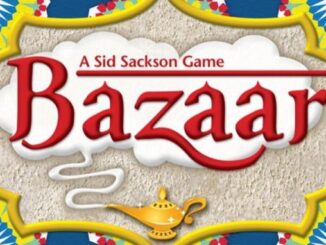
Who was it that said “The only constant is change”? In fact, it doesn’t matter now who said it. The phrase is so widely used that either you probably have at some point used it yourself. Or most likely read it or heard it somewhere.
You may have emotions attached to this phrase; either in a positive way – you wrote it on a social media post and you got lots of likes, or in a negative way – a person you do not trust all that much over uses it. Those emotions will most certainly dictate how you interpret the rest of this article, or if you indeed continue reading pass this point.
In a very over-simplified way, change, organisational change, has the same effect on us. Based on the emotions we attach to organisational change, which, in turn, are heavily influenced by our past experiences with this kind of activity, our behaviour will be heavily biased in favour of, or against the recently announced organisational change initiative at our place of work.
And guess what – between 50 to 80 percent of all transformation efforts fail. So in this game of probabilities and behaviours the numbers are heavily stacked against change.
Alright, organisational transformation fails and that makes us biased against that very specific type of change. But what relationship does this boring business topic have with games? Can games possibly change our perception about organisational transformation and change? That sure sounds like something taken from the SCI-FI movie Ender’s Game[1].
The reasons change efforts fail in job-related settings and corporate transformation, are many. Each self-proclaimed guru in this field has their own list. Nonetheless, about 80% of the items from all these lists overlap.
I also happen to have my list of reasons why transformation fail. Humour me for a few more minutes – if you made it this far into the article you may as well read the remaining paragraphs. In my experience and academic research, broadly speaking, the reasons organisational transformation efforts can be grouped in two categories:
- We don’t know what we are doing most of the time
- Even when we are given a list of tasks to follow so we ensure the change effort is successful, we don’t follow or complete all the tasks.
Training is a fundamental activity in all successful organisational transformations. Yet, training is, at best, under budget, understaffed, poorly planned and horrendously executed.
When properly planned and executed, the organisational effort should use games as part of the set of resources available to train existing and new employees during the highly volatile period of change.
I know you believe in the power of games – you are reading this article and you follow this online magazine. But unfortunately, for many people, people in high-up decision-making positions in corporations, using games to improve training and development is merely SCI-FI. Never mind talking about using games to support the transformation, that sort of claim belongs to the occult.
The use of games in learning and development, and training and development is supported by SCI-FACTS. My own personal journey with the use of serious games started when I came across this podcast, based on a study of risk and human behaviour in the aviation industry[2]
Through my journey in this new and exciting field I’ve developed games that have been used to teach subjects such as Industry 4.0, project management and organisational behaviour.

One of my latest projects is a learning solution called ToolBox 4 Creativity (TB4C). This solution maximises the affordances of game development in order to improve workshops, training, and classroom lectures.
TB4C can be used to ensure participants are fully immersed in the training activities as they focus on building prototypes of games that externalise their tacit knowledge and unconscious concerns.
What’s learned in a well-designed training sessions that used TB4C can hardly be learned in any other training*. What’s more, and this is as powerful as improving the quality of the training itself, data can be collected from the workshop participants .
* A training that uses the same amount of training resources, costs the same and takes the same amount of time.
TB4C is a learning solution that stands on its own two legs. Nonetheless, this is just one of the learning solutions that are part of the Play Learn Develop (PLD) family -research name: Human Centred Organisational Transformation (HCOT).
TB4C will launch on Kickstarter in September 2021. The Human Centred Organisational Transformation model is waiting for EU funding in order to research and develop the Artificial Intelligence and data science elements of the framework.
The main focus of PLD/HCOT is to improve the probability of success of organisational transformation. Remember that this has a failure rate of between 50 to 80 per cent? Right? I believe we can do better. I believe games have an important role to play in this improvement journey.
I hope you enjoyed this article. If you have any questions or comments, please do not hesitate to reach out through any of my social media channels listed below.
References and further reading
[1]Ender’s Game https://en.wikipedia.org/wiki/Ender%27s_Game_(film)
[2] Why lessons learned from aviation psychology are starting to save lives in hospitals.https://www.bbc.co.uk/programmes/p02x3vwh#auto
- Playtesting and the Ugly Baby Complex - 15th September 2021
- Change: a Game of Probabilities and Behaviours - 13th May 2021
- What Video Games Have to Teach Us about Learning - 13th January 2021





Be the first to comment